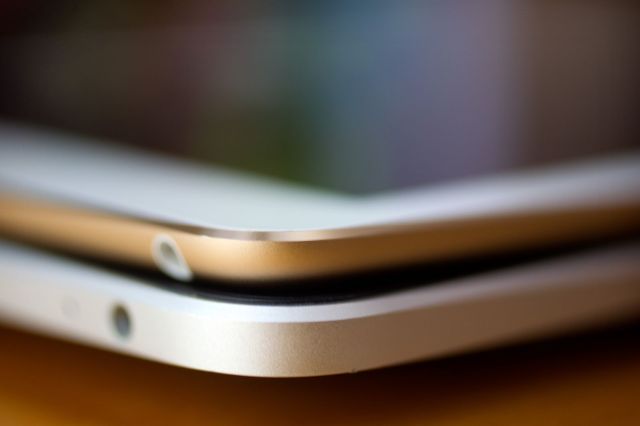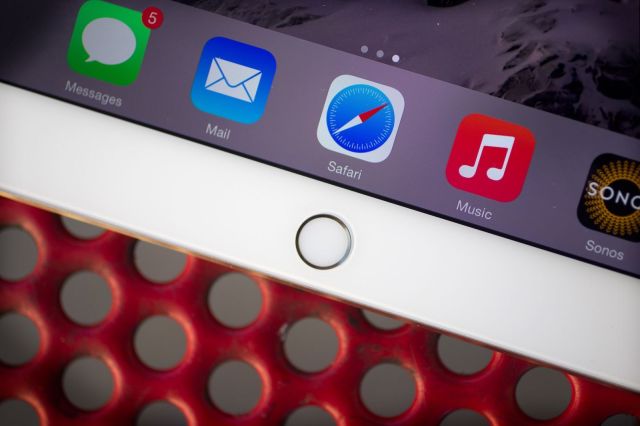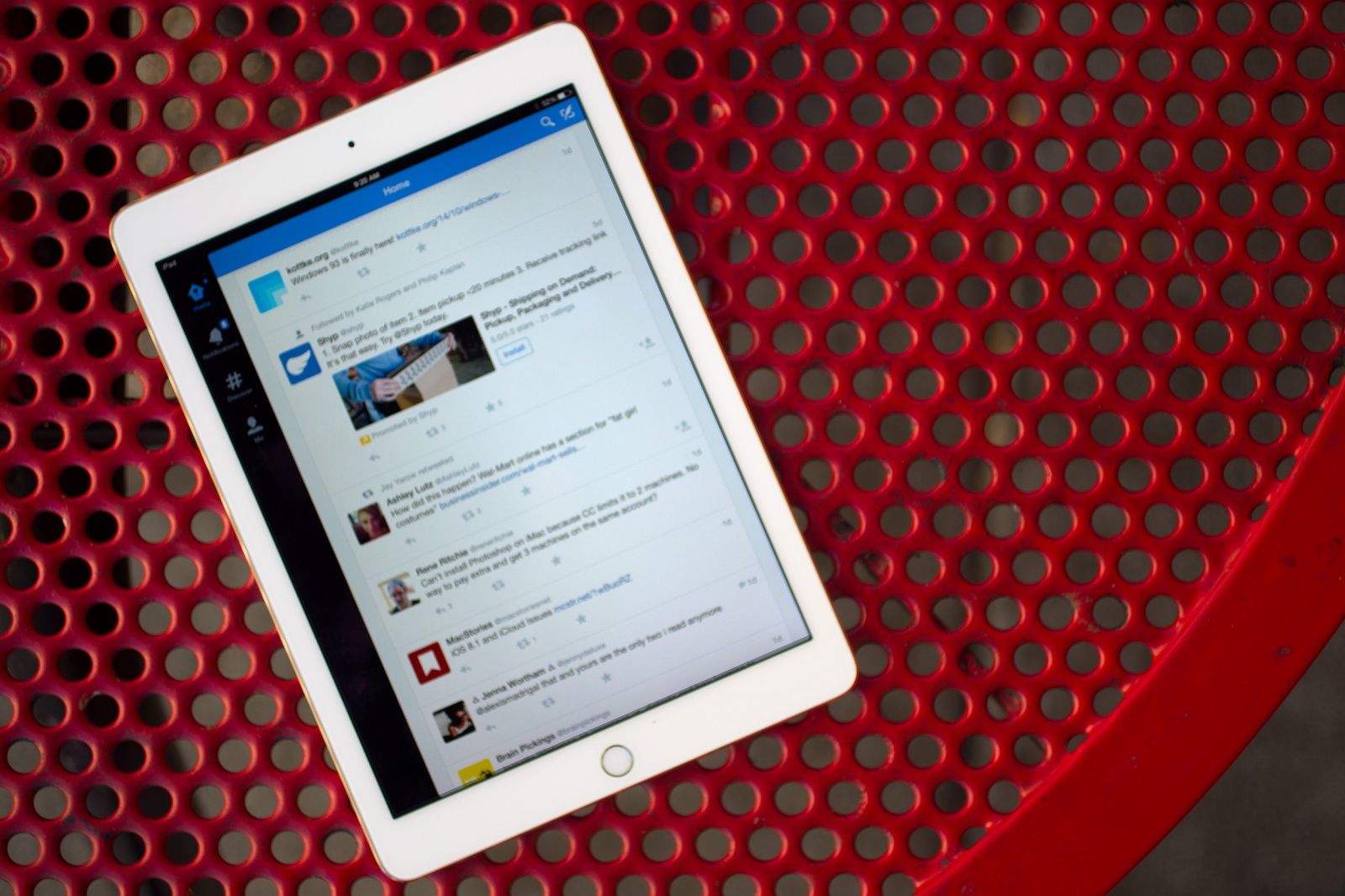Pity Jony Ive. The poor bastard just can’t catch a break.
Ive and his design team at Apple have just released a pair of exquisite iPads — the iPad Air 2 and iPad mini 3 — and yet are getting grief because the iPads offer nothing “new.”
“New” being things like face-tracking cameras, heart-rate monitors or — god forbid — a stylus. These are the kinds of things that get called “innovation.”
Instead, the new iPads look a lot like last year’s models, and those from every year before. This makes many tech reviewers yawn.
“Largely unnecessary,” says The New York Times’ lukewarm review. “More of the same,” writes Business Insider. “You might think I’d be pretty excited about them — but I’m not,” says Walt Mossberg at Re/Code.
Indeed, instead of adding new hardware features, Ive’s team has even removed them. The mute/lock button is gone on the iPad Air 2. Who removes features?
Well, Jony Ive does.
The new iPad Air 2 and iPad mini 3 are great examples of Ive’s long-stated design philosophy, which is to get the hardware out of the way so users can concentrate on what they are doing, what they are looking at, the content.
On lots of occasions, Ive has said he wants design to get out of the way. He wants his work crafting the product to be invisible. Using the product should be so natural, so intuitive, so obvious, you shouldn’t notice the work the designers did.
“Our goal is simple objects, objects that you can’t imagine any other way,” he has said. “Get it right, and you become closer [to] and more focused on the object … and you forget you are using an iPad.”
I think this is the achievement of the latest iPads — they get out of the way.
Case in point: The iPad Air 2 is so thin and light, you’re not aware of holding it. Maybe this sounds silly, but it doesn’t “remind” you by making your arm tired. The new Touch ID fingerprint sensor frees you from typing tedious passwords. The speed improvements and generous RAM get out of the way of web page refreshes. Apple’s new tablet is so fast that pages load instantly, even if you have lots of tabs open. Other tablets — including previous iPads — weren’t able to do this. Switching tabs meant reloading pages. You’d be reminded that you were using an iPad, instead of it getting out of the way.
So while critics complain about the lack of new features, the “experience” of using the new iPads has never been better. The experience is great. It’s easy to carry around, or to hold in one hand for watching a movie or reading. Web pages load instantly, and apps launch in a flash. The battery life is great — it feels like it hardly ever needs charging.
These are the best iPads Apple can build using current technology, and they are leaps and bounds ahead of previous models, even if they look much the same.
The improvements to the iPad Air 2 are mostly under-the-hood. There’s a Touch ID fingerprint sensor and an improved 8-megapixel camera. It has a fast A8X processor with impressive GPU capabilities, and, for the first time, a generous helping of RAM — 2GB, double its predecessor. There’s the M8 motion coprocessor, which analyzes movement data from the iPad’s compass, gyroscope, accelerometer and now a barometer. The screen is impressively thin. The Wi-Fi is double the speed.

Photo: Jim Merithew/Cult of Mac
Thin is in
The iPad Air 2 is implausibly thin. It’s just 6.1 mm thick, about the size of three nickels stacked together. At first, it almost feels like a trick of perception. You bounce it up and down in your hand, and hold it up in profile, to see if your hands deceive you. Wow, how can it be this thin?
It’s the world’s thinnest tablet, according to Apple, and is even thinner than both of the new iPhone 6 models (6.9 mm for the smaller model and 7.1 mm for the Plus). It feels like the iPad has been reduced to two thin sheets of metal and glass sandwiched together. Yet despite it’s skinny profile, it feels pretty solid. It’s not going to bend. It has heft, though not much.
I’m in tab heaven
Browsing the web is the No. 1 thing I do on the iPad, and it’s always been a bit painful. The problem is that I like to have at least a dozen tabs open at any one time, often more. On previous iPads, jumping between tabs would require the pages to reload, and it was often excruciatingly slow.
I tried to see how many tabs I could open before the new Air choked. On my original iPad Air, things slowed to a crawl with about a dozen tabs open. But with the Air 2, I opened 36 tabs in Mobile Safari (for some reason, 36 tabs seems to be Safari’s maximum) and it performed like a champ. It was whippy-fast until I opened up about 24 tabs. No reloading when jumping between tabs. After 24, the browser reloads pages, but it’s quick and efficient. Once a page has loaded, it’s responsive and quick. Sold!
Hooray, it’s no longer goofy to take pictures with an iPad
Apple has been making a big deal of the camera in the iPad Air 2, and quite rightly.
Taking pictures with the iPad is a ton of fun. It’s becoming my favorite way to take pictures. Thank goodness it’s no longer dorky. A few years ago, taking pictures with an iPad looked idiotic. But as it has become more common, it’s become more acceptable. It’s no longer embarrassing.
Using the full-size screen is a great way to frame a picture. You get a good idea of how the picture will turn out before taking it, and then it’s easy to see if it turned out afterward.
The 8-megapixel rear camera is very capable. It’s great in full light, taking bright, colorful pictures that are as good as those I get with my iPhone 6. Unfortunately, low-light performance is nowhere near as good. Focusing is slow, and pictures are blurry and grainy.
The iPad’s camera is capable of 1080p HD video as well as super-fun slo-mo video, which is captured at 120-frames-per-second at 720p. That’s half the frame rate of the iPhone 6. The iPad can take burst photos and time-lapse video — and, for the first time, huge, 43-megapixel panoramas.
There’s also an improved front-facing camera that can do HDR photos and HDR videos, and burst-mode selfies. My selfie days are over, but I had a lot of fun with my kids making time-lapse videos.
The screen is just gorgeous
The Air 2 is a beauty. It has the same Retina resolution as the original iPad Air, but it’s manufactured using a new “fully laminated” process. Apple has fused what used to be three separate layers — cover glass, multitouch sensor and LCD — into a single layer. Apple claims it makes the screen brighter, clearer and more vivid. A new anti-reflective coating, which greatly reduces glare, also helps make it pop.
Apple claims the new display also brings the LCD layer closer to the surface, making it feel like you’re touching the actual content of the screen. This sounded so ridiculous, I put it to the test, comparing the Air 2 to an original iPad from 2010. And it’s true. With the original iPad, icons and photos float behind a thin barrier of glass. There’s a noticeable gap, if you look very carefully. With the Air 2, content does indeed appear to be right on the surface.
Apple says it makes content “more intimate,” which is clearly marketing baloney, but it’s another small example of technology getting out of the way.
The battery lasts forever
One of the joys of the iPad is that it barely needs charging. I routinely use my iPad for several days and occasionally plug it in at night or during the day when I’m out of the house. It’s rare that the iPad dies on me when I’m using it. I just don’t think about battery life. It’s not like the old days, when you had to make sure to charge a device lest it be dead when you wanted to use it. (The same is true for the latest iPhones. Battery anxiety is over).
I know others have pointed out that the Air 2 has a smaller battery than it’s predecessor (the Air 2 has a 7,340 mAh compared to 8,827 mAh in the original). In tests, the battery life is slightly shorter, but I find this to be spec-sheet nitpicking. In day-to-day usage, the smaller battery makes no difference whatsoever. I’ve been using the Air 2 for several days and I honestly can’t remember whether I’ve plugged it in or not. I think this is the way it should be — and it’s a testament to great battery life. Charging is another thing that has simply gotten out of the way.

I love the Touch ID fingerprint sensor
The Touch ID fingerprint sensor is perhaps my favorite feature, and it’s already become indispensable on the iPad. Without being overly dramatic, I simply can’t live without it. OK, that’s an exaggeration, but I get a silly kick out of touching my thumb to unlock the tablet. It works from any angle, even upside down, which is great. I’ve sat there, locking and unlocking it just for fun.
The iPad Air 2’s Touch ID also can be used to make purchases online. The Air isn’t compatible with Apple Pay and can’t be used for real-world purchases like the iPhone 6. Nonetheless, Touch ID is undeniably handy. Several apps already use Touch ID instead of forcing you to type a tedious passcode, and I can’t wait until it’s the same for every app and website in the world. Get out of the way — I’ve got crap to buy!
Faster, pussycat!
With the iPad Air 2’s faster Wi-Fi and processor, everything just feels zippier and more natural. Websites load faster and every single task is accomplished without delay. Once again, the machine gets out of the way and lets you do exactly what you want. Surfing at home, webpages loaded instantly with little to no lag. HD video streamed quickly and efficiently.
The iPad Air 2 is the first tablet that compares, performance-wise, to laptops. Thanks to Apple’s A8X processor, the iPad Air 2 is faster than a 2011 MacBook Air, which is pretty astounding.
Although the Air 2 feels snappy, much of its processing power remains untapped. Only a handful of apps have been coded to take advantage of its capabilities, like the Pixelmator image editor shown off during the Air 2’s launch. If Pixelmator is an indicator of what’s to come, the Air will scream.
For some mysterious reason, Apple never reveals the amount of RAM in its iPhones and iPads, but teardowns have revealed the iPad Air 2 boasts 2GB, double its predecessor. As I’ve said, double the RAM means double the fun. Web surfing is fast and fun again.
What are you waiting for?
The Air 2 and mini come in three colors: silver, space gray and, for the first time, gold.
For some reason I don’t fully understand, I went for gold. I abhor gold, which looks ugly in teeth, let alone tablets. But it’s growing on me. It’s a subtle, muted gold. And besides, I spend most of the time looking at the screen, not the enclosure. I can always put it in a case. Plus, gold’s got great resale.
The iPad Air 2 is available with 16, 64 and 128GB of memory. The lack of a 32GB option is a puzzle — something Apple hasn’t explained. I suspect it’s because there are two kinds of users: Those who never download a single app or take any photographs and those who instantly fill every new device with tons of apps, games and movies.
For the former, 16GB is plenty big enough. They will never fill it up. For those of us who download tons of apps and take thousands of pictures, 16GB is unthinkable, and 32GB is no longer big enough. Therefore, 64 is the new 32 — the bare minimum for anyone who loads up on apps and media.
While 16GB is too small for me, 128 is probably overkill. I went for the 64GB model. I’ll let you know if it quickly fills up with HD slo-mo videos and giant, console-quality games. Pricing starts at $499, $599 and $699 for the Wi-Fi-only models; and $629, $729 and $829 for Wi-Fi + Cellular models.
It’s all about the “experience”
Steve Jobs talked a lot about how Apple products are centered on the user experience, not the technology necessary to implement it.
“You’ve got to start with the customer experience and work backwards to the technology,” Jobs said. “You can’t start with the technology and try to figure out where you’re going to try to sell it.”
This is the opposite of how most other technology companies work. Samsung is almost the perfect example: It works from the technology, taking a shotgun approach and releasing products with gimmick upon gimmick, then seeing what sticks.
Jony Ive is contemptuous of companies that lard on features for features’ sake in a misguided attempt to produce something “new.”
“I think those are completely the wrong goals,” he said. “A product has to be genuinely better. This requires real discipline, and that’s what drives us — a sincere, genuine appetite to do something that is better…. It’s not about price, schedule or a bizarre marketing goal to appear different — they are corporate goals with scant regard for people who use the product.”
The individuals who use the iPad Air 2 are truly front and center, I believe. In almost every respect, the new iPads improve on the tablet experience. While the new iPad’s upgrades might appear to be almost imperceptible, Ive and his team have created a magical device that is so good that it almost disappears.


